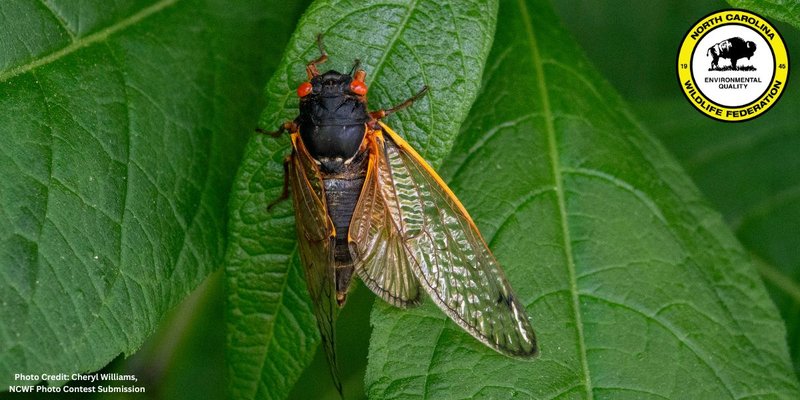
Cicadas are more than just buzzing noises; they have a rich social life full of complex communication and interactions. Think of cicadas like a community of musicians each performing their own part of a larger composition. Their songs, behaviors, and even their life cycles play a crucial part in how they connect with one another. Understanding their ways can help us appreciate the nuances of nature, revealing the intricate details of interactions that we might not notice at first glance.
Understanding Cicada Sounds
Cicadas make some of the most distinct sounds in nature, which can be both enchanting and perplexing. Their chirping isn’t just random noise; it’s a sophisticated form of communication. Each species has its specific song, primarily produced by males to attract females. They do this by vibrating special membranes called tymbals on their abdomen. It’s like playing a musical instrument, but instead of strumming a guitar, they’re producing their unique tune.
The sounds can vary greatly among different species. Some cicadas create loud, piercing calls, while others are more subdued. Have you ever noticed how these sounds can be loud enough to drown out a conversation? That’s because some cicadas can reach volumes of over 100 decibels—similar to the roar of a chainsaw! You might be wondering why they need to be so loud. The answer is simple: they have to compete with the background noise, especially in areas with lots of other sounds.
Furthermore, cicadas can also use their sounds to establish territory. Males will often engage in a “call and response” with others nearby, letting them know where they stand, literally and figuratively. This complex communication helps maintain social order among the cicada community, ensuring everyone knows their place.
The Role of Visual Signals
While sound is a primary way cicadas communicate, they also use visual signals. During mating season, male cicadas often display specific movements, like wing waving, to attract females. Think of it like a dance performance where each movement carries meaning. This visual display can help females identify the right mate, complementing the auditory signals they hear.
Additionally, cicadas may also use their body color and size to communicate. Some species can change their color slightly, which can be a signal to others. Coloration can indicate age or fitness, helping potential mates make informed choices. This visual communication is just another layer in the intricate world of cicada interaction.
As you can see, these visual signals combined with their signature sounds create a multifaceted approach to communication. It’s fascinating how they blend auditory and visual cues to connect with one another, isn’t it?
The Cicada Life Cycle’s Impact on Communication
Cicadas have a unique life cycle, which also influences how they communicate. Most cicadas spend several years underground as nymphs, feeding on plant roots. When they finally emerge, it’s like a grand debut, where they unleash their songs into the world for the first time. During this period, communication is key.
Emerging cicadas release pheromones—chemical signals that attract others of the same species. This olfactory communication helps them find mates quickly after years apart. It’s like hosting a reunion after a long time, where the familiar scents guide them back to each other.
Once they’ve mated, the female lays her eggs in tree bark. This new generation will follow the same cycle, ensuring the continuation of their species. It’s a beautiful, natural process that shows how communication aids not just in mating but also in survival.
Cicadas and Environmental Interactions
Cicadas don’t just communicate with one another; they also interact with their environment in notable ways. Their presence can indicate the health of an ecosystem. For instance, when they emerge in droves, it signals a robust local environment that’s supportive of their life cycle. Thus, their calls are not just sounds but also indicators of the state of their surroundings.
Moreover, cicadas play a role in the food web. Their emergence can provide a burst of nutrition for predators, such as birds and mammals. This way, their communication and life cycle help support local wildlife, creating a balanced ecosystem.
When cicadas die, their bodies return nutrients to the soil, contributing to the health of plants. So, while they may seem like mere background noise in our lives, cicadas have a significant impact on their environment.
Challenges in Cicada Communication
Like many creatures, cicadas face challenges in their communication. Environmental changes, habitat destruction, and climate change all disrupt their natural rhythms. For instance, urban noise can drown out their calls, making it harder for females to hear potential mates. It’s a bit like trying to hold a conversation in a crowded restaurant; no matter how loud you shout, it’s difficult to connect.
Additionally, vibrations from human activity can interfere with their ability to communicate effectively, disrupting their mating rituals and behaviors. This has raised concerns about cicada populations and their overall health in certain regions.
Understanding these challenges is critical, as it can help inform conservation efforts. By fostering environments where cicadas can thrive, we also promote biodiversity, ensuring these fascinating creatures continue to contribute to our world.
Cicadas communicate through a rich tapestry of sounds, visuals, and interactions that are both intricate and essential. They’re like a symphony in nature, where each component plays a role in creating harmony. From their loud calls that fill the summer air to their unique life cycle and environmental interactions, cicadas remind us of the beauty and complexity of life.
So next time you hear cicadas buzzing away, take a moment to appreciate their communication dance—an elegant blend of song, sight, and social interaction that has been perfected over millions of years. By understanding how cicadas communicate and interact, we gain a deeper respect for the delicate balance of nature, one beautiful song at a time.
